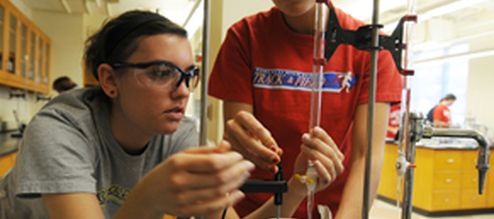Synthesis, Spectroscopy and Electrochemistry of Some Polynuclear Complexes of Arninoethanethiol
Document Type
Article
Publication Date
6-1985
Publication Source
Inorganica Chimica Acta
Abstract
Polynuclear S-bridged complexes of the general formula {[Co2L6]M}n+ with M = Co(III), Cd(II), Pb(II), Ni(II), Zn(II) and Hg(II) were prepared from [Co(2-aminoethanethiolate)3] and the appropriate metal salt. Proton and 13C NMR spectra are consistent with structures previously proposed for these species with 13C chemical shifts dependent on the bridging metal ion. Electrochemical studies are consistent with a model in which an S-bonded ML6 moiety (i.e., the bridging metal ion and the six aminoethanethiolate ligands) acts as a ‘dodecadentate’ ligand bonded to two Co3+ ions. Reduction of the terminal cobalt ions in these trinuclear complexes is observed in the range −0.75 to −1 V vs. SCE on mercury, gold or glassy carbon working electrodes. For complexes with relatively labile bridging ions, the electrode reaction is irreversible, presumably due to rapid decomposition of the labile cobalt(II) product. For the tricobalt(III) derivative, however, the electrode reaction is reversible consistent with other recent observations on cage or otherwise stereorestrictive ligand systems [1].
Inclusive pages
201–206
ISBN/ISSN
0020-1693
Publisher
Elsevier
Volume
100
Peer Reviewed
yes
Issue
2
Sponsoring Agency
National Institutes of Health, Public Health Service
eCommons Citation
Brubaker, George R.; Henk, Michael G.; and Johnson, David W., "Synthesis, Spectroscopy and Electrochemistry of Some Polynuclear Complexes of Arninoethanethiol" (1985). Chemistry Faculty Publications. 29.
https://ecommons.udayton.edu/chm_fac_pub/29
COinS




Comments
The authors gratefully acknowledge support of the National Institutes of Health Grant GM18600 and PHS Biomedical Research Support Grant 2-S07-RR07027-18 for the purchase of electrochemical instrumentation. They also acknowledge the ARCO Foundation's fellowship support for David W. Johnson.